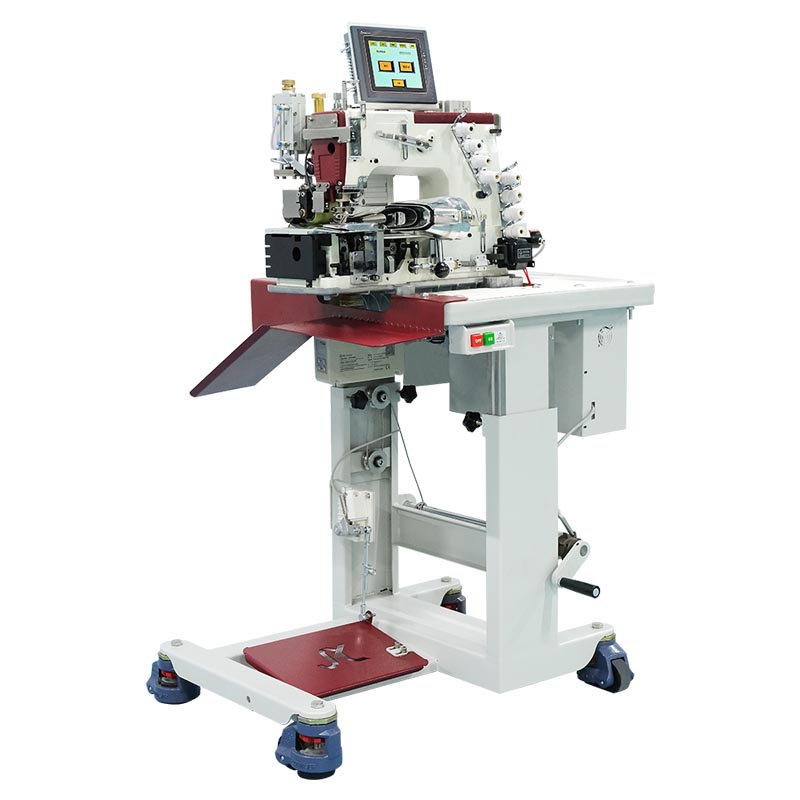The Automatic Waistband Unit has become an indispensable solution for modern apparel factories seeking efficiency, precision, and consistent quality. Designed to integrate seamlessly into production lines, this unit transforms the way manufacturers handle waistband sewing operations, especially for trousers, jeans, uniforms, and workwear. As an advanced Industrial Waistband Unit, it combines high-speed sewing, automated feeding, and programmable trimming to deliver unparalleled productivity.

Why Choose an Automatic Waistband Sewing Machine?
In today’s competitive garment industry, precision and speed are crucial. Manual waistband stitching can lead to inconsistencies, longer production cycles, and higher labor costs. A Computerized Waistband Sewing Machine automates this critical process, ensuring:
Consistent stitch quality across every garment
Faster production rates and reduced idle time
Standardized output suitable for OEM and contract manufacturing
By adopting an Automatic Waistband Sewing Machine, factories can improve efficiency while reducing errors, rework, and material waste.
Key Features of Modern Waistband Sewing Units
The Industrial Waistband Unit is engineered for heavy-duty use in high-volume garment production environments. It supports both bent and straight waistband designs, allowing factories to produce diverse apparel styles without switching machines.
2. Automated Feeding System
Equipped with synchronized top and bottom pullers, the unit ensures smooth and even fabric feeding, reducing slippage or distortion during stitching. This feature is critical for high-quality jeans manufacturing machines and other trousers production lines.
3. Programmable Trimming and Skip-Stitching
Modern Waistband Sewing Units offer programmable trimming at the front and end of the waistband, maintaining consistent length across multiple garments. The skip-stitching mechanism ensures clean, professional finishing suitable for fashion and workwear garments alike.
4. High-Speed Production
With sewing speeds reaching up to 4500 RPM and the ability to process 180–225 pants per hour, the Automatic Waistband Unit significantly boosts throughput for factories focused on production line sewing automation.
Applications in Garment Manufacturing
The Automatic Waistband Sewing Machine is ideal for a variety of production scenarios:
Jeans Manufacturing: Produces durable and precise bent or straight waistbands for denim jeans.
Uniform & Workwear Factories: Ensures reinforced and consistent waistband stitching for industrial trousers and cargo pants.
Fashion Apparel Production: Supports dress pants, casual trousers, and tailored pants lines.
OEM Garment Production Equipment: Perfect for factories producing multi-size and multi-style orders for global brands.
Integrating this automated sewing equipment into production lines reduces manual handling and improves the consistency of final products.
Benefits of Using an Automatic Waistband Unit
Precision: Maintains uniform stitch quality and accurate waistband alignment.
Efficiency: High-speed production increases output while reducing labor costs.
Flexibility: Supports multiple waistband shapes and fabric types.
Reliability: Designed for continuous industrial operation with minimal maintenance.
Scalability: Ideal for factories expanding production or adopting automated garment sewing systems.
The Automatic Waistband Unit represents a crucial investment for apparel manufacturers looking to optimize their production lines. By integrating a Computerized Waistband Sewing Machine into your operations, you achieve higher efficiency, consistent quality, and a professional finish across all garments. Whether for jeans, trousers, workwear, or OEM orders, this Industrial Waistband Unit is engineered to meet the demands of modern garment factories and production automation.




